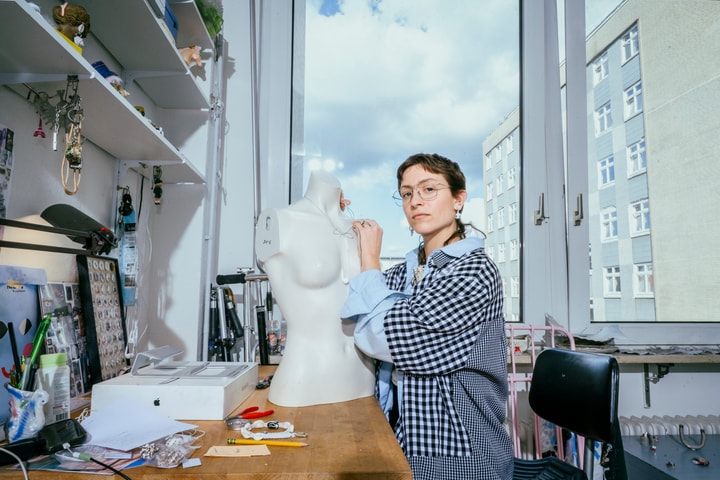Bottega Veneta’s intrecciato weave reigns as one of fashion's most iconic designs, sitting alongside the likes of Chanel’s quilting and Louis Vuitton’s monogram. What resulted in a sophisticated pattern was a desperate measure to handle leather due to the limited power of sewing machines in Veneto, where the brand started in 1966. Now four decades later, Bottega has transformed its technique into a symbol of status.
From the Cabat tote to the Jodie bag, the Italian fashion house’s leather goods made their way to the forefront of high fashion runway and celebrity street style in its non-ostentatious philosophy.
Humble Beginnings
Bottega’s logoless appeal was a founding principle of the brand created by Michele Taddei and Renzo Zengiaro in Veneto, Milan, 56 years ago. During this time, sewing machines in the Veneto region were not strong enough to operate on thick leather. As a result, the brand chose to weave – braiding long strips of double-faced leather into pieces.
Advertising with the slogan, “When your own initials are enough,” the Italian fashion house’s understated aesthetic soon gained popularity – first evident with the Intrecciato bag’s cameo in the movie American Gigolo with actress Laura Hutton in 1980, followed by Andy Warhol’s short film Bottega Veneta Industrial Videotape in 1985. The value of the intrecciato weave was further emphasized when Bottega experienced a setback with its trend-focused designs during the strike of logomania.
With Gucci Group’s acquisition of the house and Tomas Maier’s appointment as Creative Director, the brand saw its revival as Maier resorted to Bottega’s non-branded personality. He explained to SCMP, “I felt there was a need for a product for people who didn’t like logos, so what we did to start was going back to the essence of the brand: the soft Nappa leather, the signature weave, and a bag that is only signed by the way it’s made.” In 2006, Bottega established the Scuola dei Maestri Pellettieri aimed to train leather artisans and preserve the exquisite craftsmanship of the intrecciato weave.
Weaves Exaggerated
In 2018, Daniel Lee succeeded Tomas Maier just shy of 32 years old and helped define a new era of modernity for Bottega. Whether it was the wave of oversized silhouettes or a result of artistic intuition, Lee’s ingenious idea of supersizing the intrecciato weaves to the “intreccio” set the leather motif ablaze once more and to a magnitude that won him a record-breaking four awards at the British Fashion Awards. During his tenure, some of the biggest hits amongst fashion editors included the Cassette bag and its padded iteration, the cushioned BV Lido heels, and the puddle boots.
The Art of Weaving
While generally grouped under the term of “intrecciato,” the weaving techniques for some bags are distinct from others. For one, the Cassette bag employs a simpler interlacing method than the Pouch bag. The former involves weaving horizontal and vertical leather strips over and under each other, resulting in a grid with small gaps. Meanwhile, the latter's denser appearance is created by cutting tiny slits in a zigzag manner in an underlayer to pull woven leather into a gapless alignment.
Other than appearance, the weaving technique also leads to different textures of bags. The Pouch bag’s tight-weave formation and base layer support allow the use of supple leather that can bend, whereas the Cassette bag uses stiffer, double-faced leather made by gluing two layers back to back that hides the flesh side and exposes only the grain side.
Staying true to its roots
At the beginning of 2021, Bottega made the power move of the era by deleting its official accounts on Instagram, Twitter, and Facebook. It works as a strategy to recreate the mysterious air that many luxury houses were familiar with before virtually everything became accessible. Think celebrities like Emma Stone, Scarlett Johansson, and George Clooney, who are made all the more tasteful and enigmatic for swearing off social media.
Ultimately, little presence is presence, and Bottega has not entirely closed off itself but is merely gaining awareness through other means, such as influencers and fashion bloggers. While the decision may come as a shock for social media is so interwoven into our lives, let alone fashion labels that thrive off of the attention garnered from likes and shares, the decision only feels natural for the designer brand's more down-to-earth origins.
